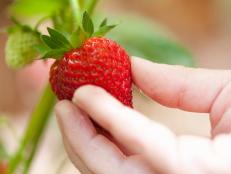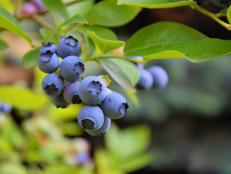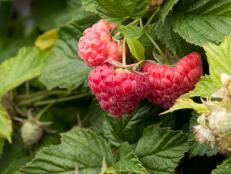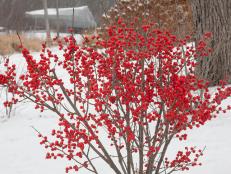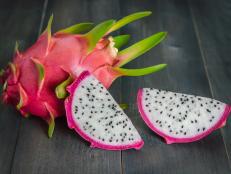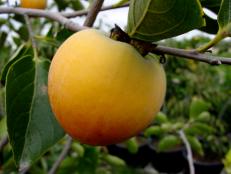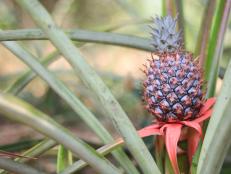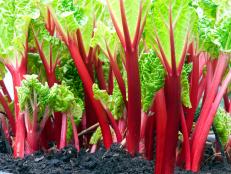Growing Elderberries
Elderberries are often grown for their striking foliage and bright berries, but look before you eat — many elderberry varieties are poisonous.


NourseFarms.com
Elderberry Benefits and Uses
Elderberries are considered minor fruits, compared with blueberries, raspberries and blackberries. Although raw blue and purple elderberries are bitter and unpleasant tasting if eaten raw, and contain alkaloids that may cause nausea, they can be cooked or processed to make jams, jellies, wine, pies, flavored vinegars and teas.

Image courtesy of Proven Winners
Wellness Benefits of Elderberry
European elderberry (Sambucus nigra) has been used for its reputed health benefits since ancient times. The flowers and berries of elderberry are high in fiber, vitamin C and antioxidants. For that reason they may help with inflammation and stress, support your immune system and protect your heart. But contrary to popular belief, a 2020 study published in the Journal of General Internal Medicine found that elderberry has not been proven to diminish the duration or severity of the flu. Experts still recommend an annual flu shot as the best prevention.
And be aware that the flowers and unripe berries of the elderberry are toxic and can cause vomiting and nausea or even poisoning when eaten in large amounts. Women who are pregnant or breastfeeding should not take elderberry supplements. And always check with your doctor before introducing a new supplement into your diet, especially if you have an immune disorder.
Editor's Note: Never eat or use the fruit from red elderberries, Sambucus racemosa, which are poisonous. Even the stems, leaves, bark and roots of these plants contain cyanide toxins. Be extremely cautious about the kind of elderberries you consume or touch. Visit the USDA Plant Database for more information.
How to Grow Elderberries
Many gardeners simply use elderberries as ornamentals. These members of the honeysuckle family are easy to grow as attractive shrubs or small trees. Their blooms appear from early to mid-summer, and develop into reddish-purple to black berries that often attract hungry birds. (If you want the berries for yourself, use netting to protect your plants.)
Elderberries prefer moist, well-drained soil with a pH of 5.5 to 6.5, but these adaptable plants can perform in many types of soils. Give them full to part sun. Add good organic matter to the hole when you plant, and feed with 10-10-10 fertilizer or compost each year in early spring.
Because their roots grow close to the soil’s surface, elderberries should be watered deeply and thoroughly the first year after planting. Mulch to control weeds, or pull them by hand, to avoid injuring or disturbing the shallow roots.
Pests
Elderberries are seldom bothered by pests or diseases, although powdery mildew may be a problem in wet weather. It’s not usually serious enough to kill the plants, but it can be treated with a fungicide, or you can simply remove and destroy the affected leaves in autumn. If cane borers infest old canes, prune out and destroy those canes.
Pruning
Elderberry, especially the new, colorful varieties, benefits from hard pruning when young (during the first one to three years) so it develops a full, bushy form. Plants flower on old wood, so it’s best to prune after flowering if you want blooms and/or berries. Two exceptions:
- Some gardeners grow the dark-leaf types for their leafy beauty. In that case, you can even prune plants to the ground each spring, treating them like a perennial.
- If you’re growing plants for berry production, remove branches which fruited that year in fall. Elderberry bears best on 2-year-old stems. Older stems tend to split and produce less fruit.
Each year, elderberries sprout new canes that develop lateral branches. Second-year canes with lateral branches are usually the most fruitful. After three or four years, the old canes become less productive and can be pruned away. Wait until the plants are dormant in winter before pruning.
If you’ve noticed elderberries growing along riverbanks and roadsides, or in moist woodlands and marshes, you’ve probably seen the American elderberry, Sambucus canadensis, a common, wild species native to the U.S. Another common type, the European elderberry, Sambucus nigra, is native to Europe and Asia; it’s usually hardy in Zones 5 to 7.
Berries
Elderberries need cross-pollination for berry production. Plant more than one variety. Do a quick check online or with your local nursery to make sure you’re getting plants that cross-pollinate one another. If your focus is solely berry production, choose varieties developed for that purpose, like ‘Samdal’ and ‘Samyl.’ Use bird netting to protect berries from hungry birds.
Types of Cultivars

Courtesy of Proven Winners
'Black Lace' Elderberry
'Black Lace' Elderberry
‘Black Lace’ is a deciduous elderberry for part to full sun that bears soft pink flower clusters in the spring and black-red berries in fall. The dark, purple-black foliage is finely cut, like a Japanese maple’s.

Image courtesy of Proven Winners
Sambucus nigra ‘Black Beauty’ opens large pink flowers in mid-summer and grows up to 12 feet high.
'Black Beauty' Elderberry
A new introduction, ‘Black Beauty’ opens large pink flowers in mid-summer and grows up to 12 feet high. Both ‘Black Lace’ and ‘Black Beauty’ are deciduous plants that are hardy from Zones 4a to 7b. Use them in containers, as specimens, or as hedges and screens. Pet owners, take note: the leaves, roots, bark and buds of both varieties can be toxic.

ProvenWinners.com
'Lemony Lace' elderberry (Sambucus racemosa) unfurls chartreuse leaves with a lacy look.
'Lemony Lace' Elderberry
Gorgeous golden leaves make 'Lemony Lace' elderberry a knock-out in the landscape. Leaves light up the landscape as they shift from red new growth, to red-edged gold, to chartreuse (when mature). Flowers appear before leaves, and they fade to form red berries. This elderberry crop is inedible for humans, but a huge favorite among birds. Use 'Lemony Lace' to add elegant beauty to a wildlife garden. Hardy in Zones 3-7.

ProvenWinners.com
'Instant Karma' elderberry (Sambucus nigra ‘Sanivalk’) unfurls green and white variegated leaves.
'Instant Karma' Elderberry
If you like variegated leaves, there’s an elderberry for that, too. 'Instant Karma' unfurls green and white leaves with consistent variegation. White flowers appear in early summer, followed by deep purple-black berries if a pollinator variety is present. Like all elderberries, 'Instant Karma' works in the landscape in a shrub border or as a hedge and grows in full sun or part shade. Hardy in Zones 4-7.
How to Make Immune-Boosting Elderberry Syrup
Power through cold and flu season with this homemade remedy.
Growing Edible Elderberries
If you want to grow elderberries for their fruits, plant at least two different varieties that are known to bear safe, edible berries. Keep the plants no more than 60 feet apart. Berries may take two to three years to appear. Look for varieties such as ‘John’s,' ‘Adams,' ‘Nova’ or ‘York,' which are all good producers. Berries are ready to harvest from August to September, depending on the cultivar you’re growing. Keep the fruits refrigerated until you’re ready to use them, and again, remember the blue and purple berries must be cooked to bring out a sweet flavor. Red elderberries are toxic.
Elderberry Benefits
There are a number of reputed health benefits to the berries and flowers of elderberry. Elderberries contain antioxidants that fight free radicals, the molecules that can damage cells. Elderberry also contains vitamins including vitamin C and A as well as flavonoids (plant chemicals) that may fight inflammation.
Those properties have been said to boost your immune system and might also decrease stress and help with inflammation. Some recommend elderberry to help prevent colds and flu.







